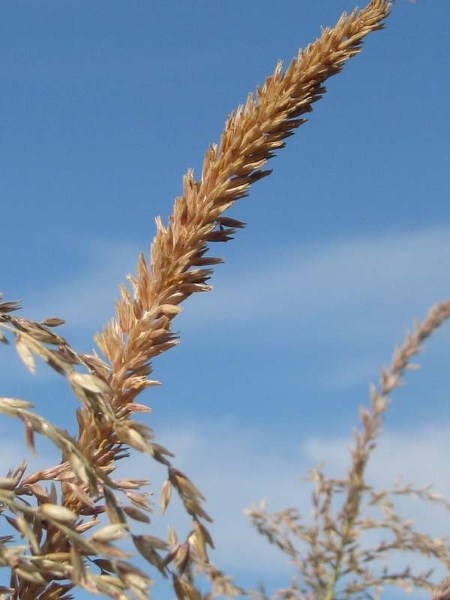When I harvested the corn from my garden last week, I lopped off the tall, spiky flower stalks and for a time, threw them into the compost heap.
Then the most primitive of instincts overcame me. Within a minute I’d yanked the beautiful corn-flower tops out of the compost heap, tied them into a kind of sheaf and then tied them again onto a stick that I stuck into the ground in the centre of the garden.
Instead of compost, the new structure stood tall against the blue sky as a kind of monument of thankfulness for the harvest. Maybe the birds will eat the stems. I placed the sheaf of corn there as a token to the abundance of this year’s crop and as a dedication to the Earth that produced it in hopes that next year the corn will be plentiful again.
That compulsion to celebrate the harvest and to give something back to the land probably began with the first farmer after she figured out how to grow a steady supply of grain.
By Egyptian times, the harvest celebration had become a ritual of dancing and hymn singing to the fertility gods, who were honoured with a presentation of the first fruits and grains. The Romans celebrated by filling cornucopias with fruit and bread. Translated from Latin, cornucopia means horn of plenty.
This year, most St. Albert gardeners were blessed with a cornucopia of vegetables and fruit.
Local gardener and St. Albert Floral Arts Society member Irene Hill has two apple trees whose branches are still laden with fruit. She leaves many of the apples for the birds and the squirrels that visit her yard over the winter, but she also incorporates them into wreaths and table arrangements to celebrate the season.
“If you are lucky enough to have a garden, take the root vegetables, the turnips, the carrots and the brussels sprouts and use them in your arrangements,” Hill said.
Outside, Hill planned to take branches from a lilac tree and use them as a foundation for an arrangement for the birds.
“It’s called nature-enhanced arrangements and, right now, they are all the rage,” said Hill.
The branches could be tied to a fence and decorated with sunflowers full of seeds or with sheaves of grain or even birdseed, such as millet. To enhance the arrangement, she planned to tie a big burlap ribbon into a bow that could be attached to the twigs.
She can enjoy the artful arrangement from her kitchen window all winter as she watches the birds feast on the garden remnants.
“Wheat and millet are easy to find in florists’ shops,” she said, adding that for best results, the add-on fruits and grains should be wired to the branch, so they don’t fall off and onto the ground.
“I may just stick the branches vertically into a few pots filled with soil and then I’ll water it well, so they freeze in position. Then I’ll wire apples from my tree onto the branches, perhaps some hydrangeas from my garden, which have dried and look beautiful and some sunflowers,” she said.
Hill used a grapevine wreath for a more formal arrangement for her front door. She used artificial, orange and rust-coloured silk leaves combined with small gourds and pumpkins to provide a welcoming atmosphere for guests coming to her home.
“Because it’s on the front door, and I want it to last without looking dried out, I used artificial leaves and fruit,” she said.
For her table arrangement, Hill didn’t even bother with a plate or tray, but simply placed her harvest on a placemat instead.
“That way, everyone can help themselves, just as they would with a salad,” she said.
To make the arrangement, she made a foundation using the biggest vegetables, which happened to be a cabbage, a butternut squash and an eggplant. Vegetables like carrots, colourful peppers and tomatoes were put in next and she topped it off with two chrysanthemums and two roses.
“Put the flowers’ stems into floral-water picks, so they will last,” she said.




